At the Uffizi finally reopens to the public the Stanzino delle Matematiche, a small room of very high symbolic and historical value, completely restored and returned to its original meaning. Located next to Buontalenti’s famous Tribuna, this space had for years been reduced to a mere observation point toward the Tribuna itself, to which access is now forbidden for conservation reasons. The recovery sought by the museum’s management, led by Simone Verde, has restored dignity and legibility to one of the most emblematic places of the link between art, science and dynastic collecting.
The Stanzino takes its name from the frescoes with a scientific subject that decorate its ceiling, true visual tributes to great scientists of antiquity such as Pythagoras, Ptolemy, Euclid and especially Archimedes, celebrated at a time when Florence could boast of the arrival of a very precious Greek codex of his works, now preserved at the Laurentian Library. The restoration, which lasted about two months, included a thorough campaign of stratigraphic assays that guided the recovery operations. The floor and walls were restored, with a new light coloring that restored brightness to the room, while the work on the bronzes housed in the niches enhanced the depth and relief of their arrangements. Curtains were removed and filters were installed on the windows to re-establish the visual relationship with natural light. Artificial lighting was completely redesigned, particularly to enhance the ceiling frescoes, decorated with grotesques by Julius Paris between 1599 and 1600.
The reopening is part of a broader museological vision that aims to tell the story of the Uffizi’s evolution through the centuries by relating the building’s different historical and cultural stratifications. In this sense, the Stanzino delle Matematiche is an emblematic example: born as a space dedicated to science at the height of the Renaissance, it was then transformed into a small room of ancient and Renaissance statuary in the 18th century, during the great rearrangement of the Tribuna between 1780 and 1782, conducted by Abbot Luigi Lanzi.
Grand Duke Ferdinando I de’ Medici had in fact wanted to set up the Stanzino as a place to house the collection of scientific instruments started by his father Cosimo I. It housed treatises, “technological” equipment, wooden models of war machines and fortifications, maps and city plans. It was not just a collection of objects, but a true intellectual project, consistent with the Medici’s vision as patrons not only of the arts, but also of the sciences.
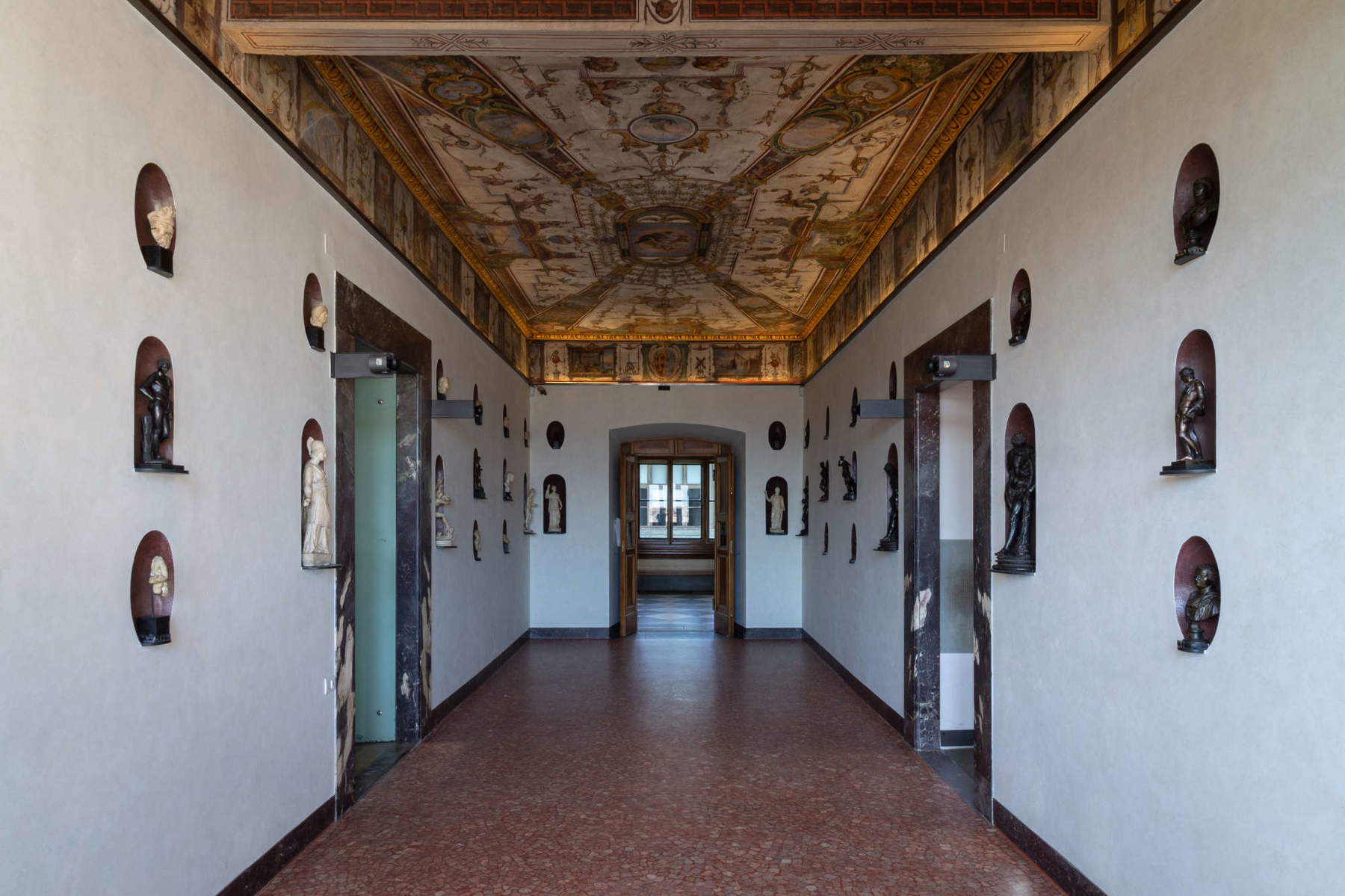
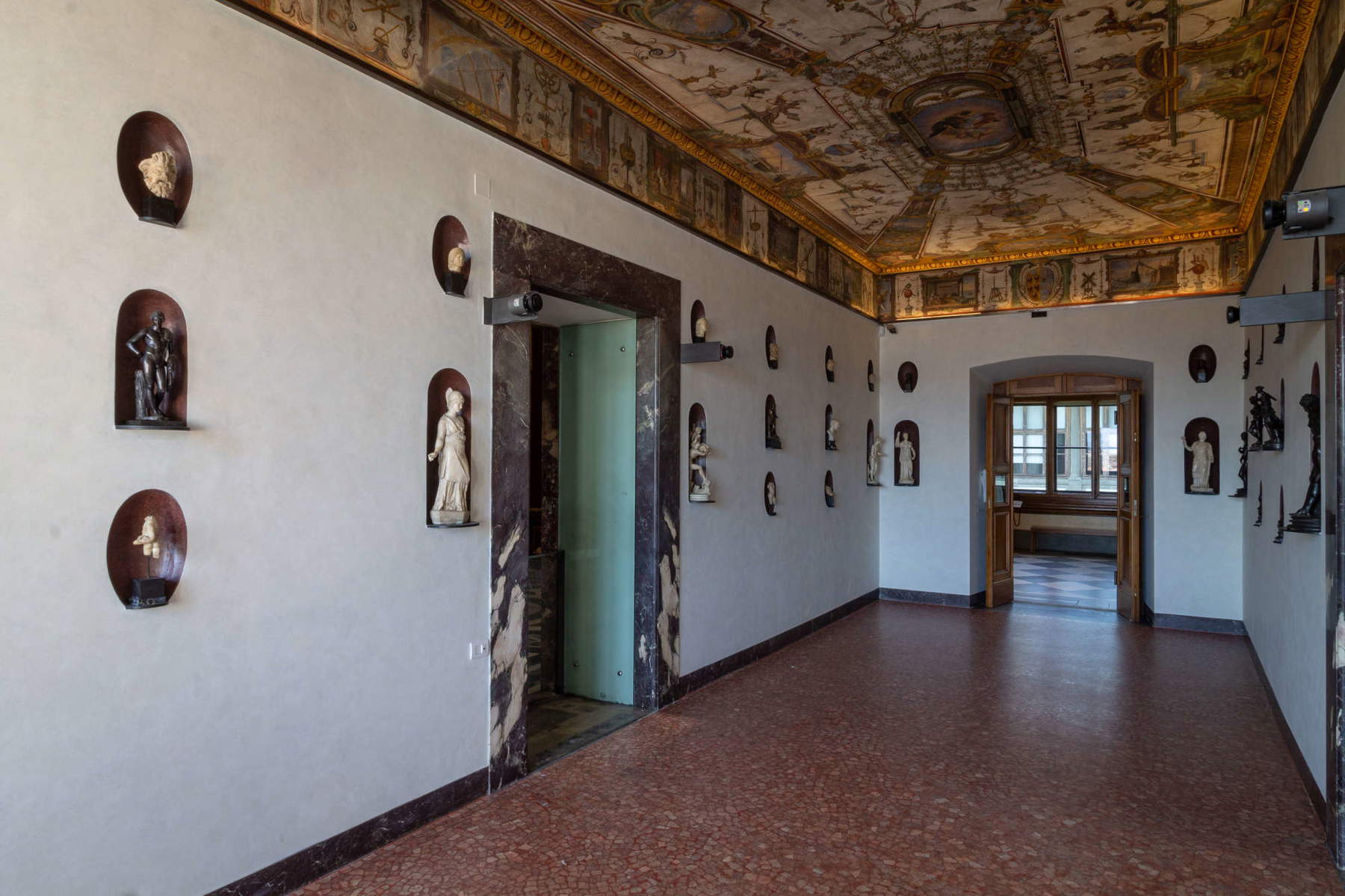
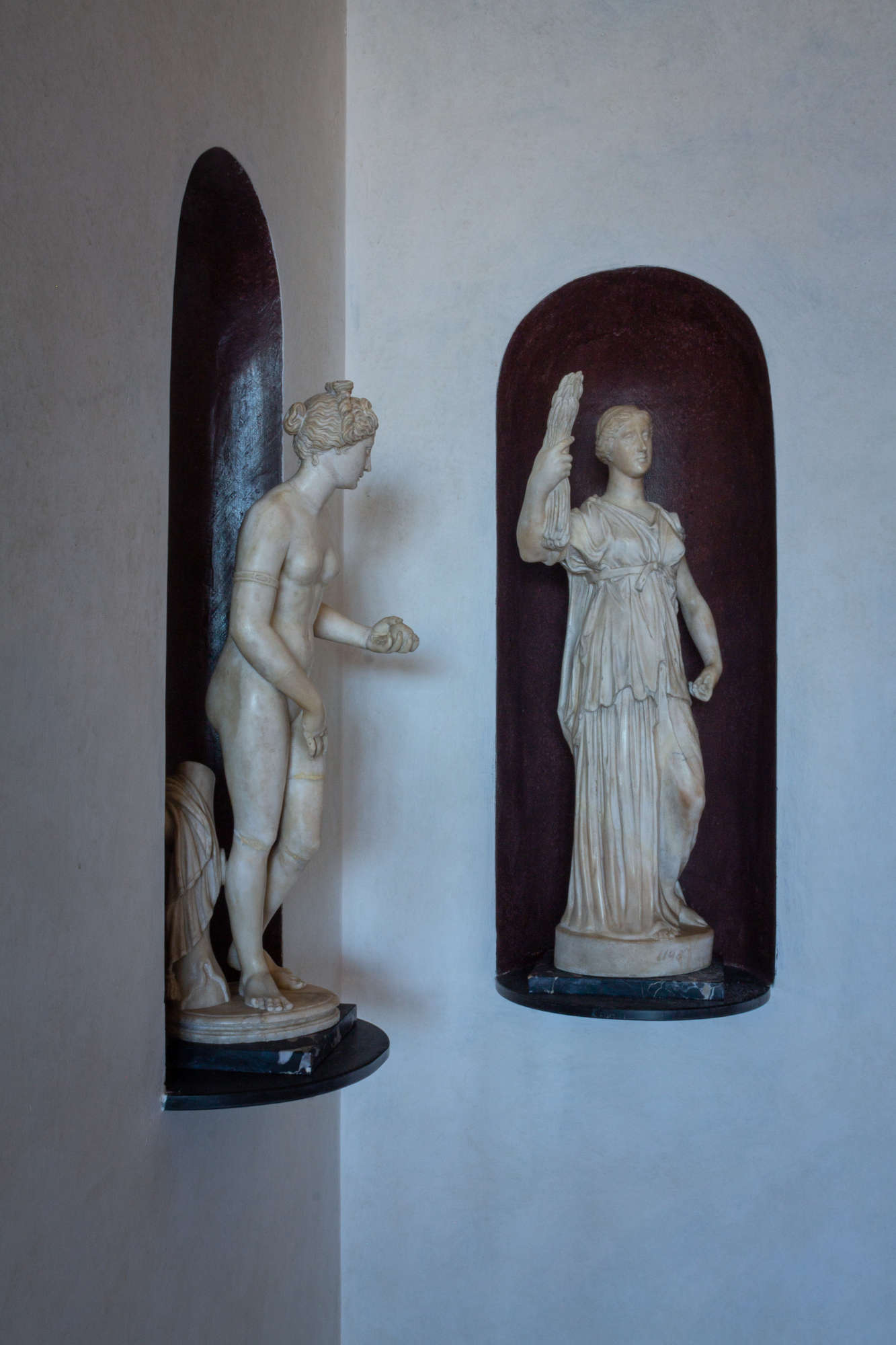
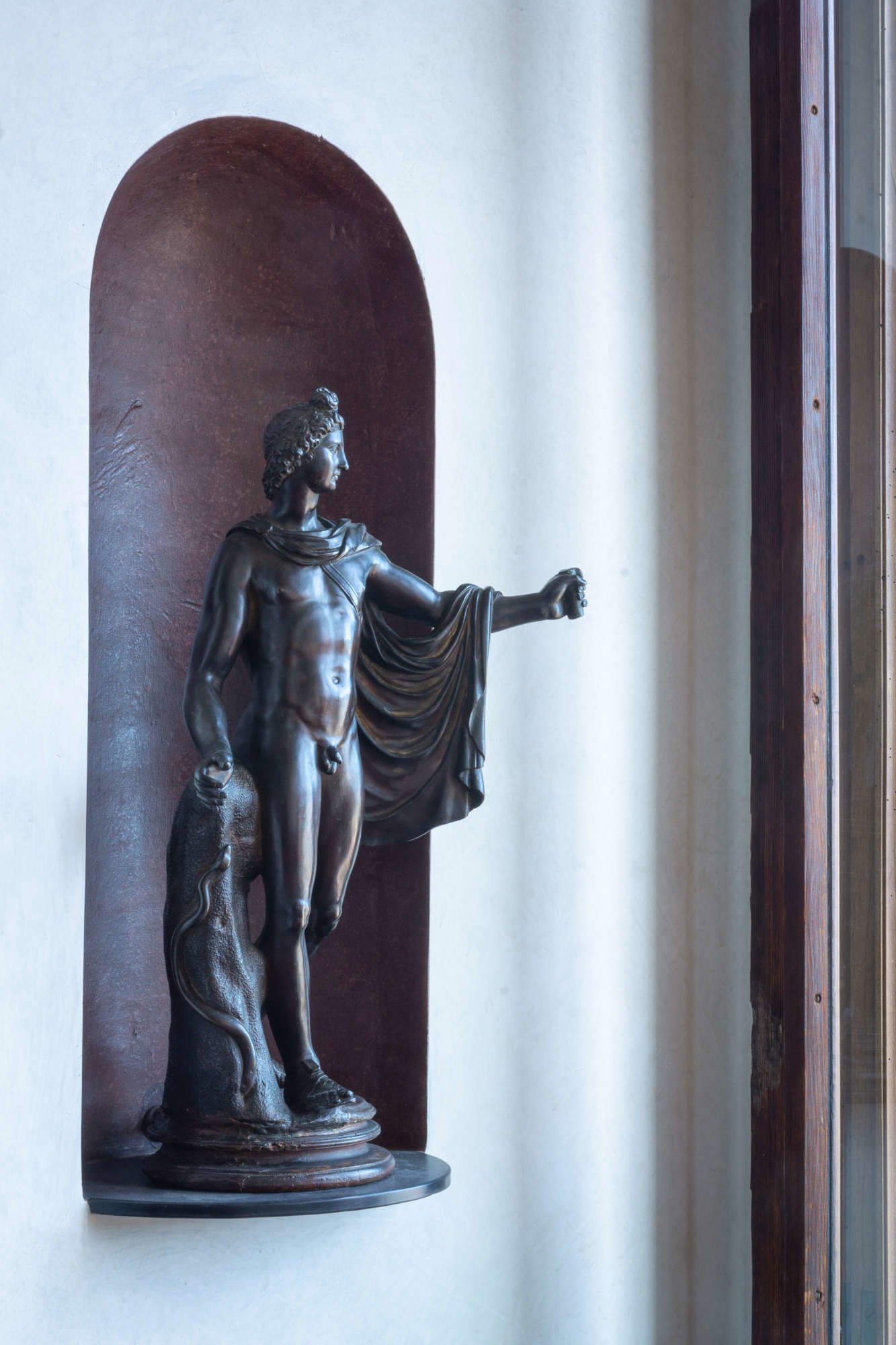
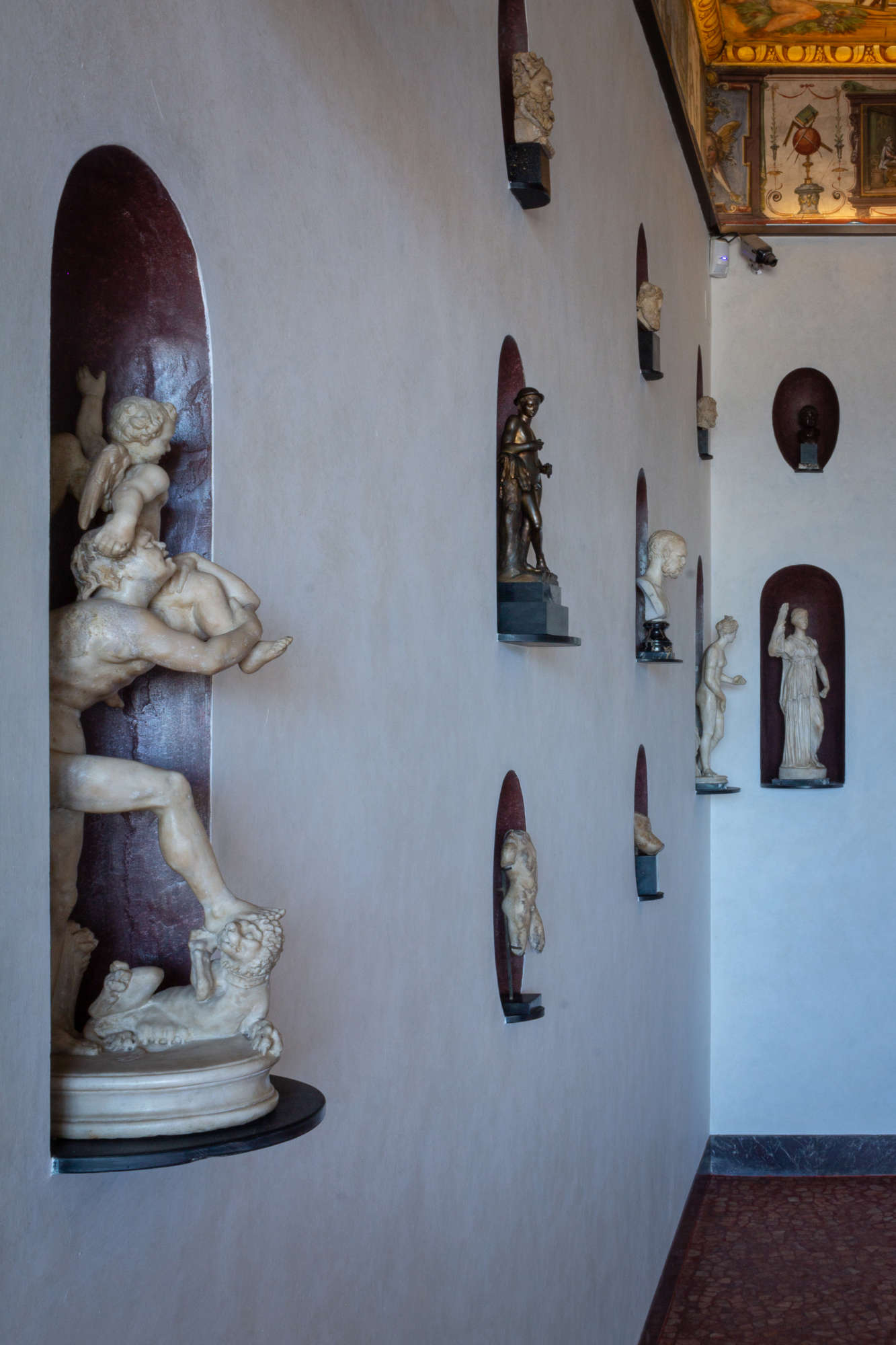
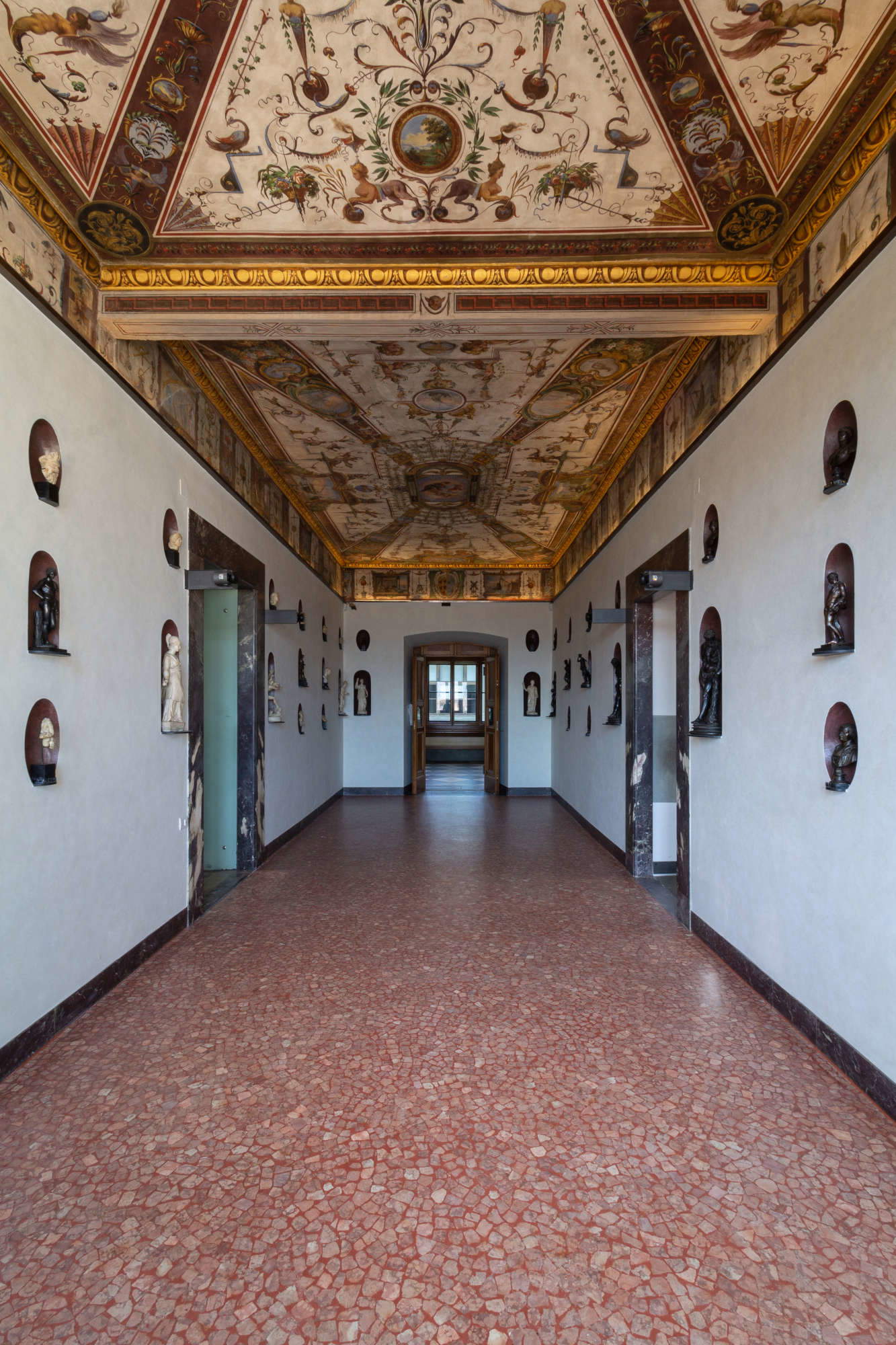
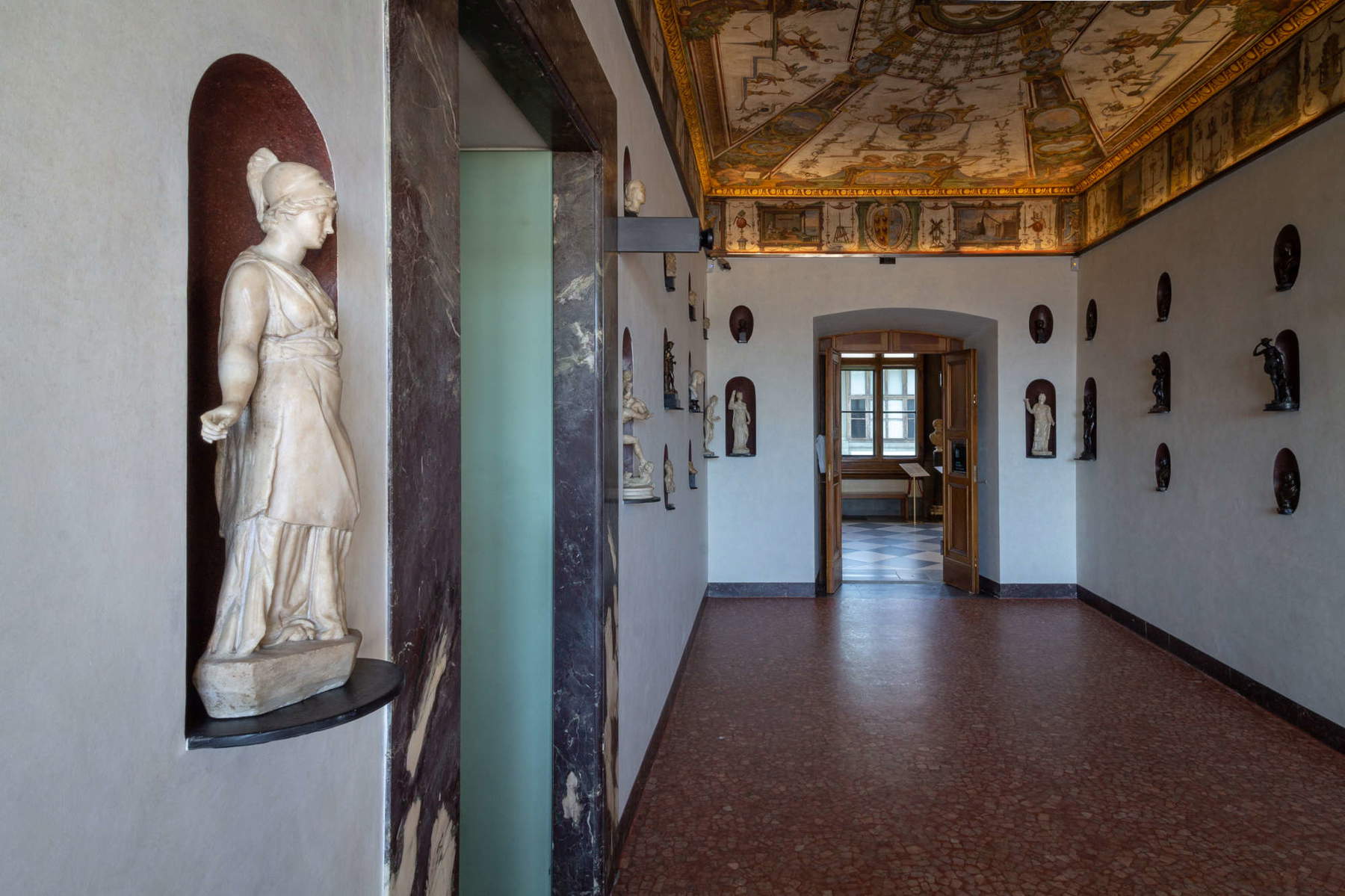
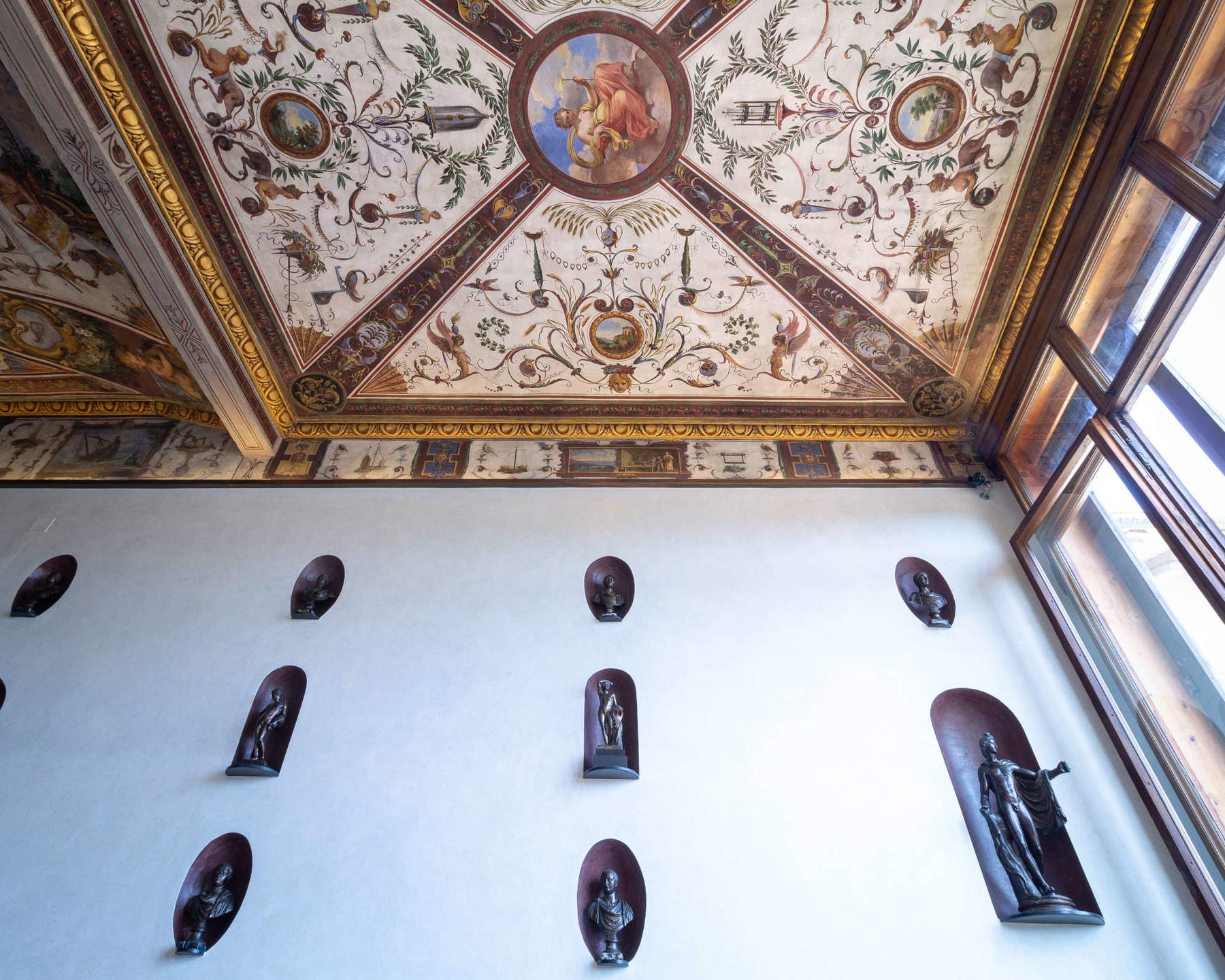
The relationship between the Medici family and science reached its peak in their support for Galileo Galilei, who dedicated his famous Sidereus Nuncius to Cosimo II. Galileo was also celebrated in the frescoes in the Ponente Corridor of the Uffizi as the “novello Archimedes,” and the figure of the scientist thus entered the Medici visual narrative.
The Stanzino delle Matematiche, though small in size, was the symbolic and architectural node of this narrative, connected directly to the Terrazza delle Carte Geografiche-also recently restored-which housed cartographic representations and offered a panorama of the then known world. Over time, however, the function of the Stanzino changed. With the rearrangement of the 18th century, its walls were adapted to accommodate small niches, within which some of the most precious works of the Medici collection found their place. These were ancient and Renaissance statuettes, partly from the shelves of the Sala Ottagona, but also 16th-century bronzes of great value, such as those made by Willem Tetrode.
Tetrode, a Dutch sculptor active in sixteenth-century Rome, had made a series of small bronzes inspired by the most famous ancient statues then known. These works were originally conceived to adorn a sumptuous medagliere, donated in 1562 to Cosimo I by Gianfrancesco Orsini. Over the following centuries, however, the niches of the Stanzino were gradually emptied and closed. Only in the 1960s were they rediscovered and partially repopulated, but never fully enhanced as they are today.
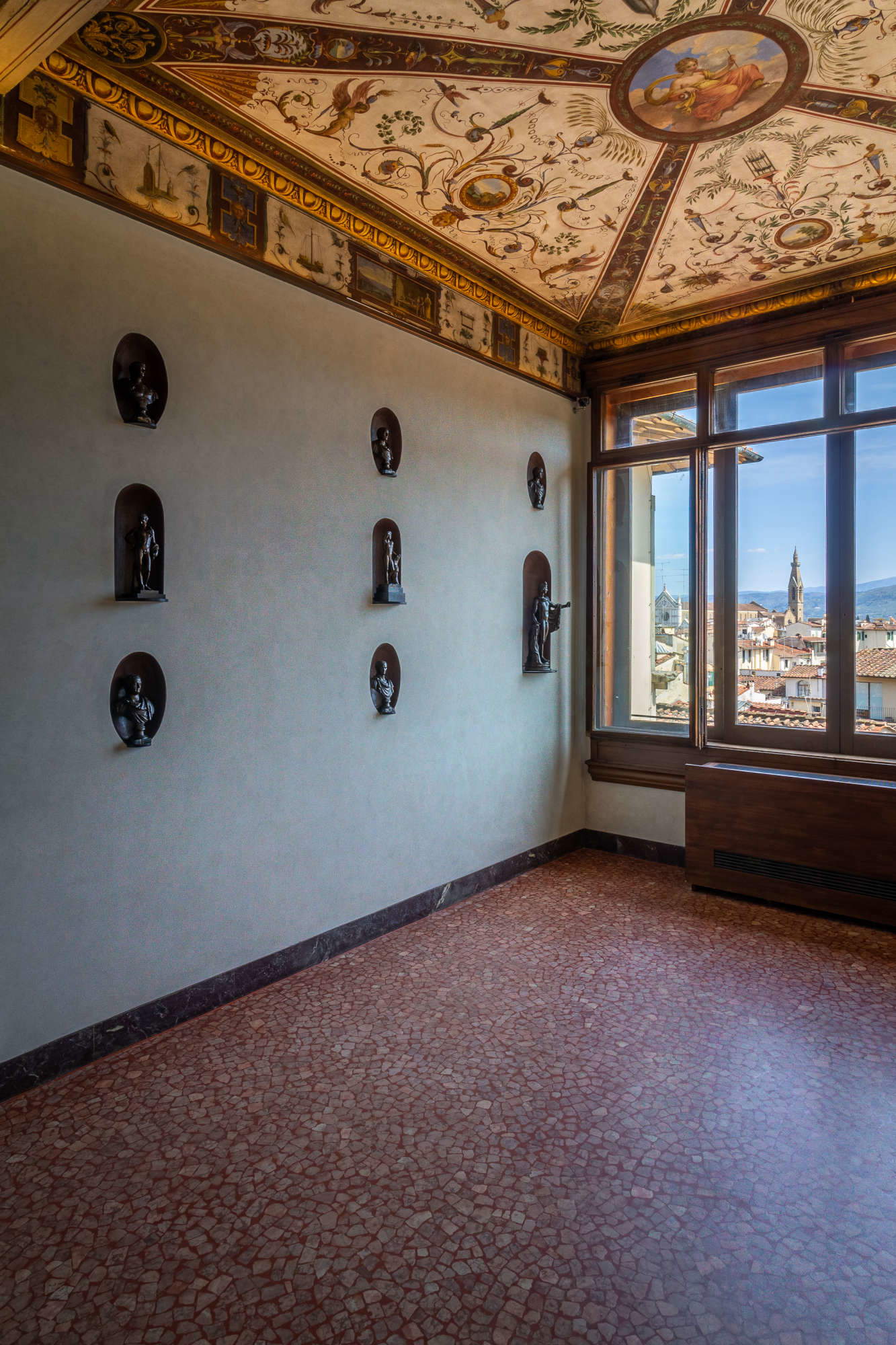
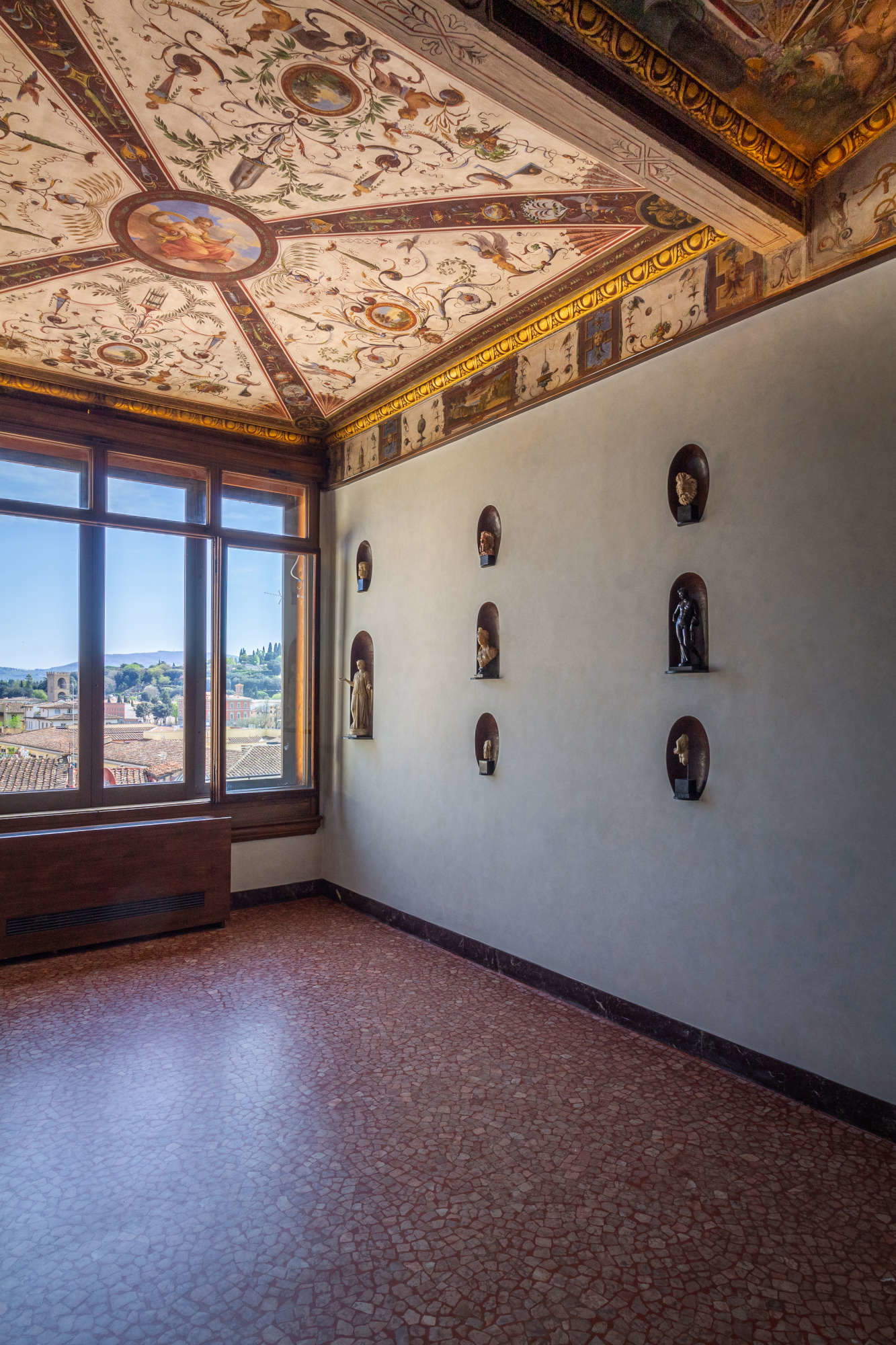
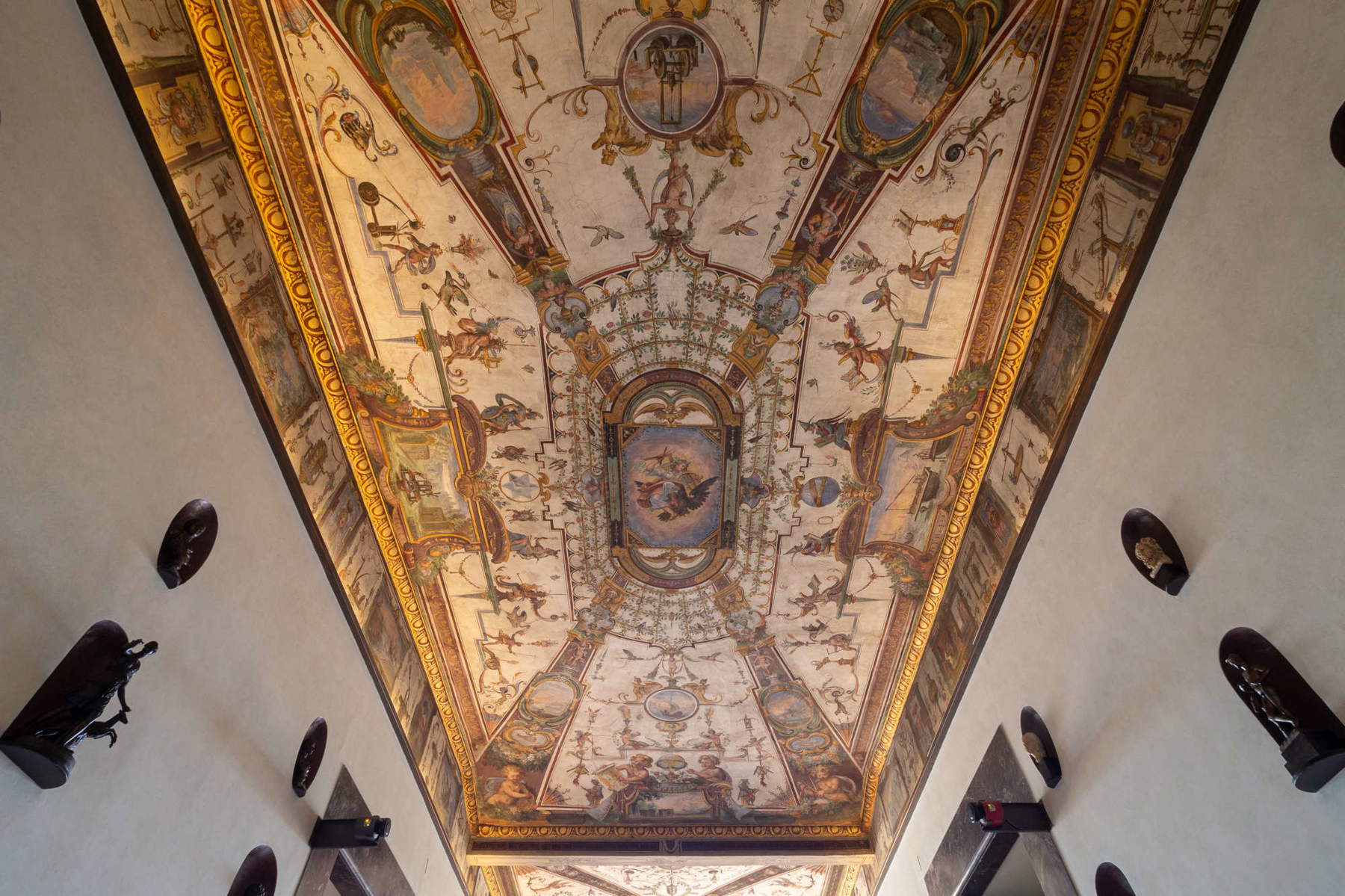
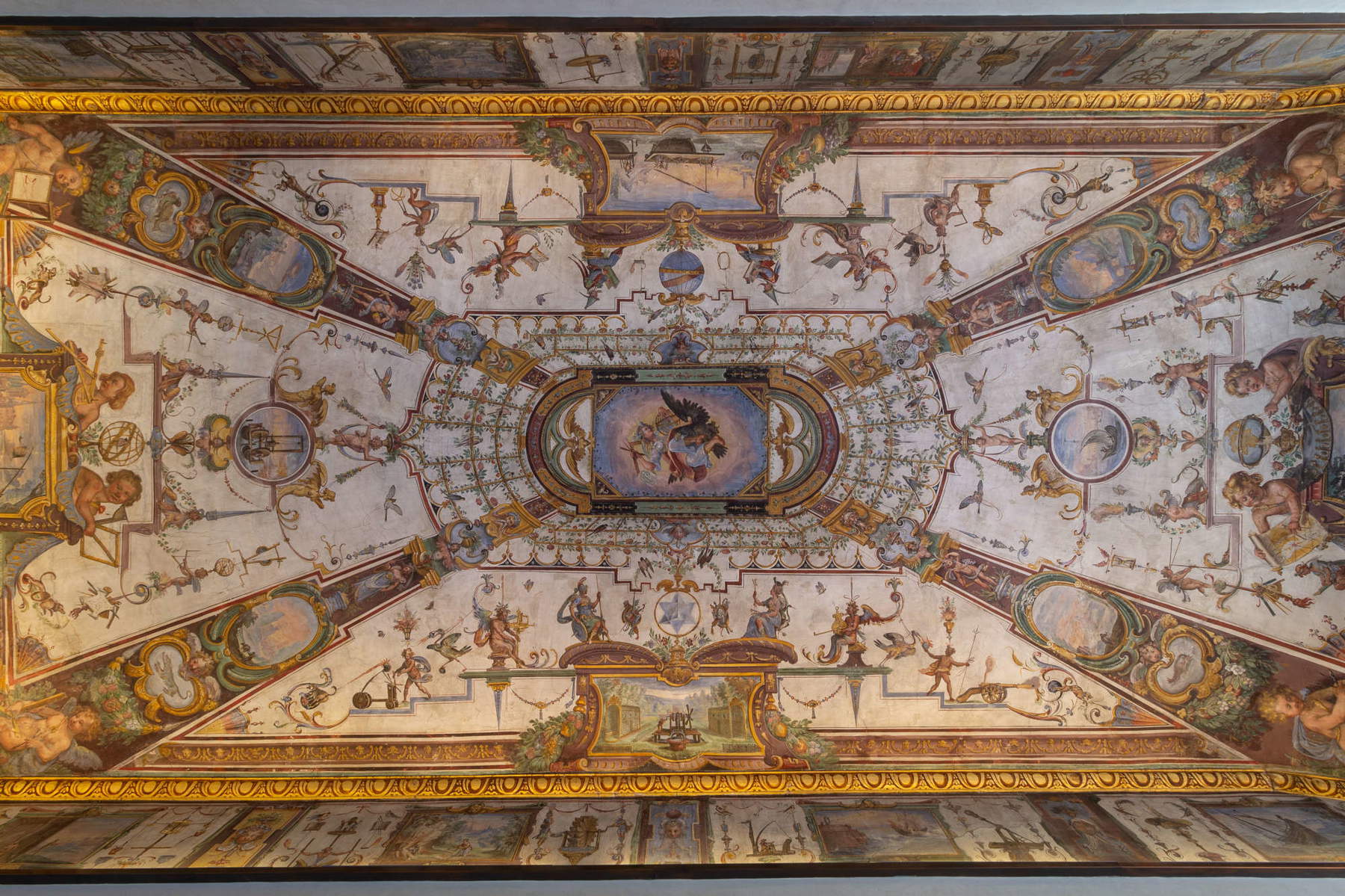
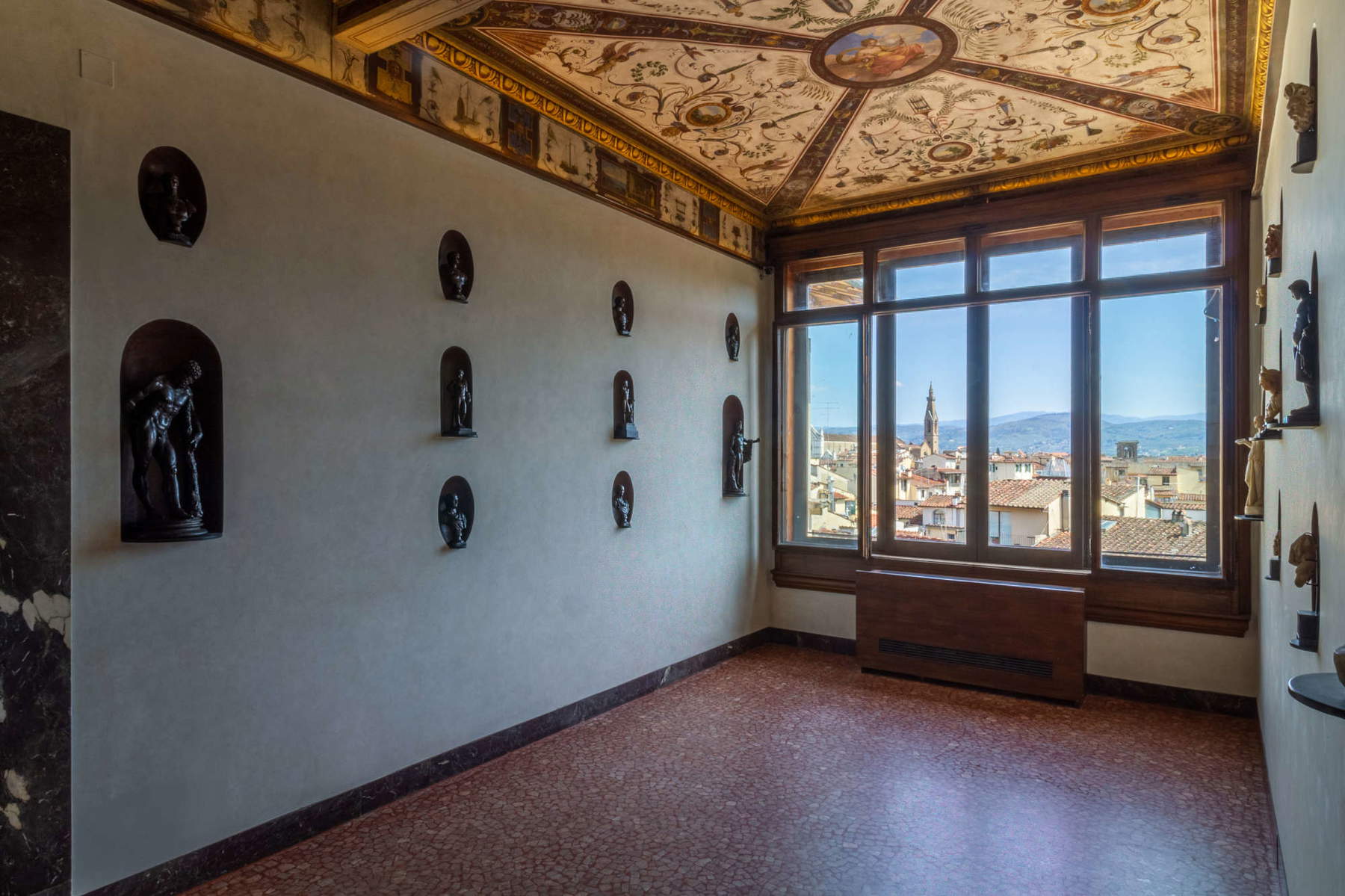
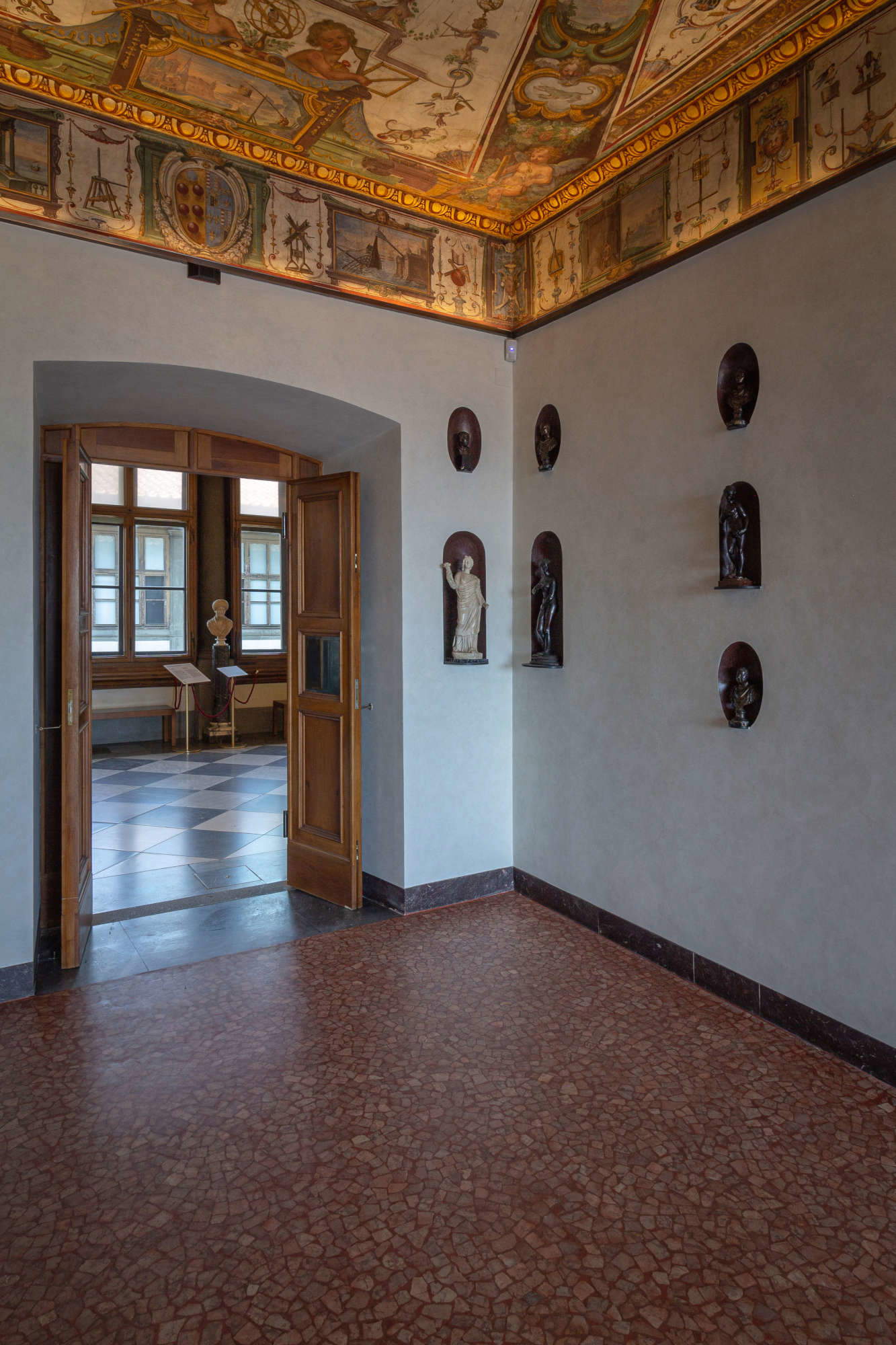
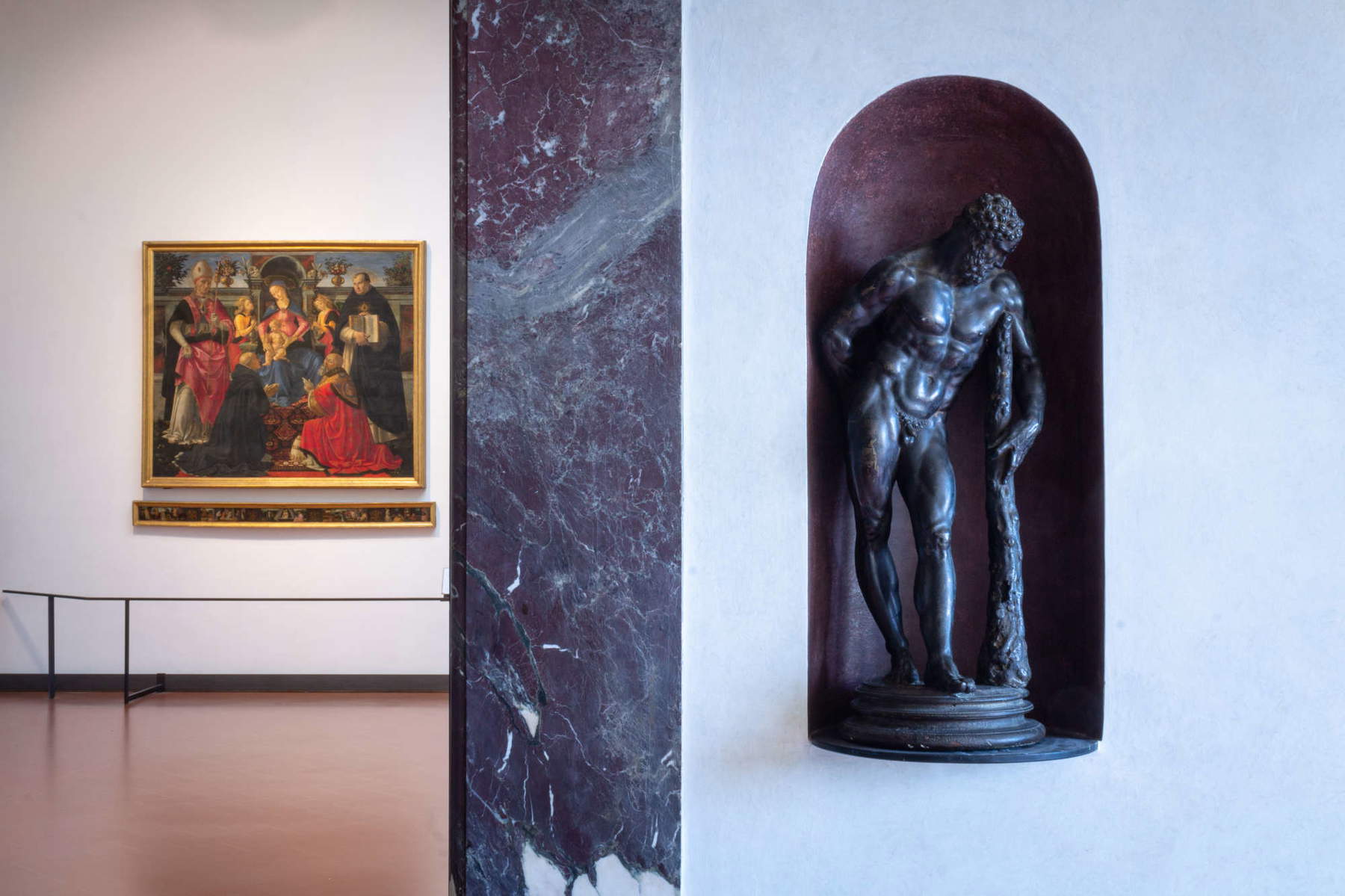
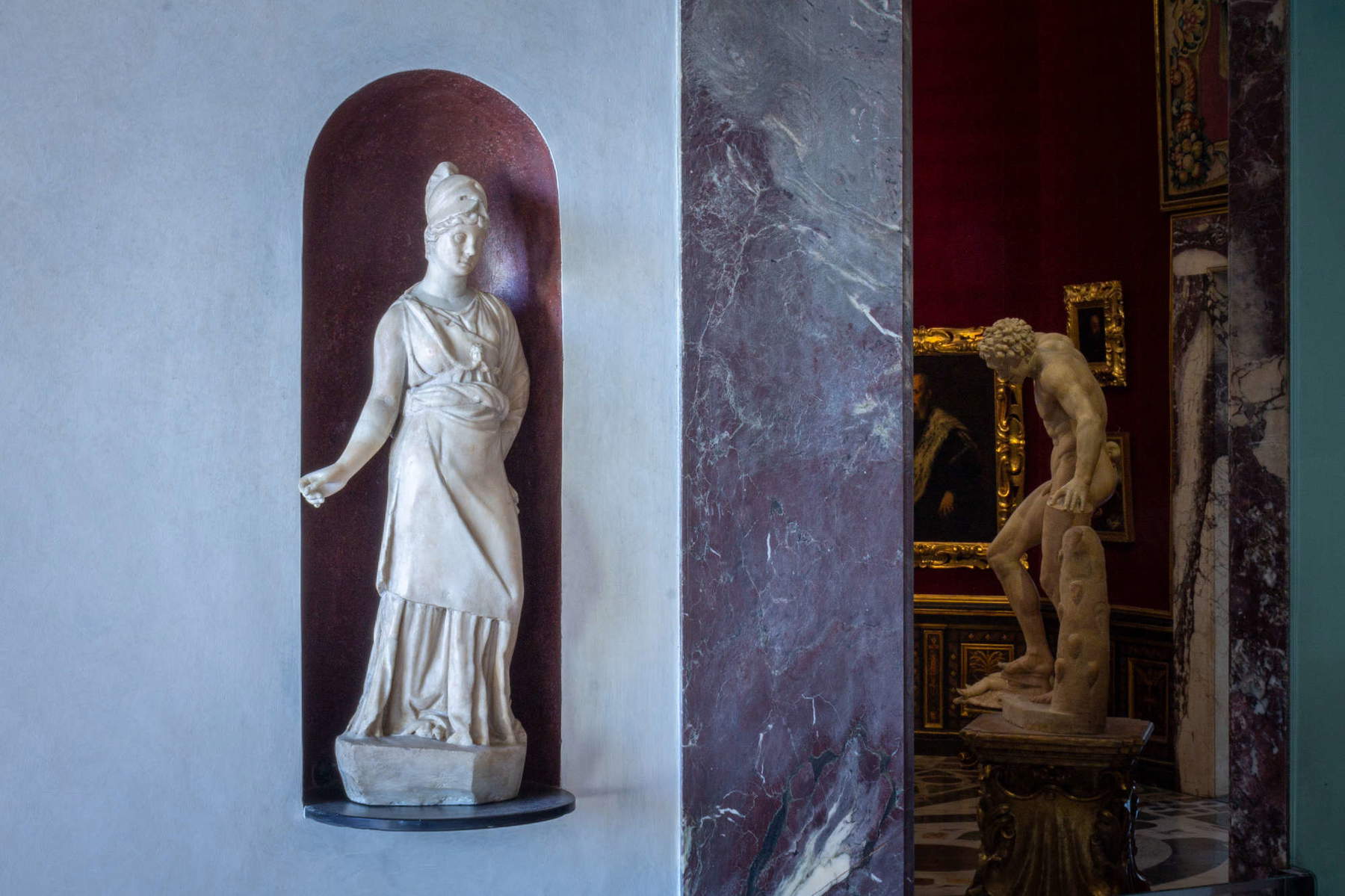
With the current intervention, the Stanzino is returned to a complete fruition, capable of telling its dual soul: on the one hand a place of celebration of Renaissance science, on the other an eighteenth-century treasure chest for works of art that are minor only in size, certainly not in historical or artistic value.
The restoration is part of Director Verde’s larger project to recover and reinterpret the Uffizi’s entire museum identity. The stated goal is to transform the Gallery from a dynastic museum-as it originally was-to a modern picture gallery aware of its own complex evolution.
“Ever since access to the interior of the Tribune was foreclosed for conservation reasons,” comments director Simone Verde, “for many years the room essentially been relegated to the function of overlooking the Tribuna, and the general public no longer had the opportunity to appreciate its originality and value or to understand its important role within the Medici collecting universe. In its new arrangement, which moreover enhances its treasures, the Stanzino bears exemplary witness to how the tree of all European museums grew from the Uffizi and to the close connection between this space frescoed with the instruments of science, the nearby Terrazzo delle Carte Geografiche and the Sala delle Carte Geografiche in the Palazzo Vecchio. In its transformation in the eighteenth century into a space for the display of antiquities it also testifies to the transition from a sixteenth-seventeenth-century model to a cornerstone of European antiquarianism.”
 |
| Uffizi, restored Stanzino delle Matematiche: a treasure among science, art and history rediscovered |
Warning: the translation into English of the original Italian article was created using automatic tools. We undertake to review all articles, but we do not guarantee the total absence of inaccuracies in the translation due to the program. You can find the original by clicking on the ITA button. If you find any mistake,please contact us.